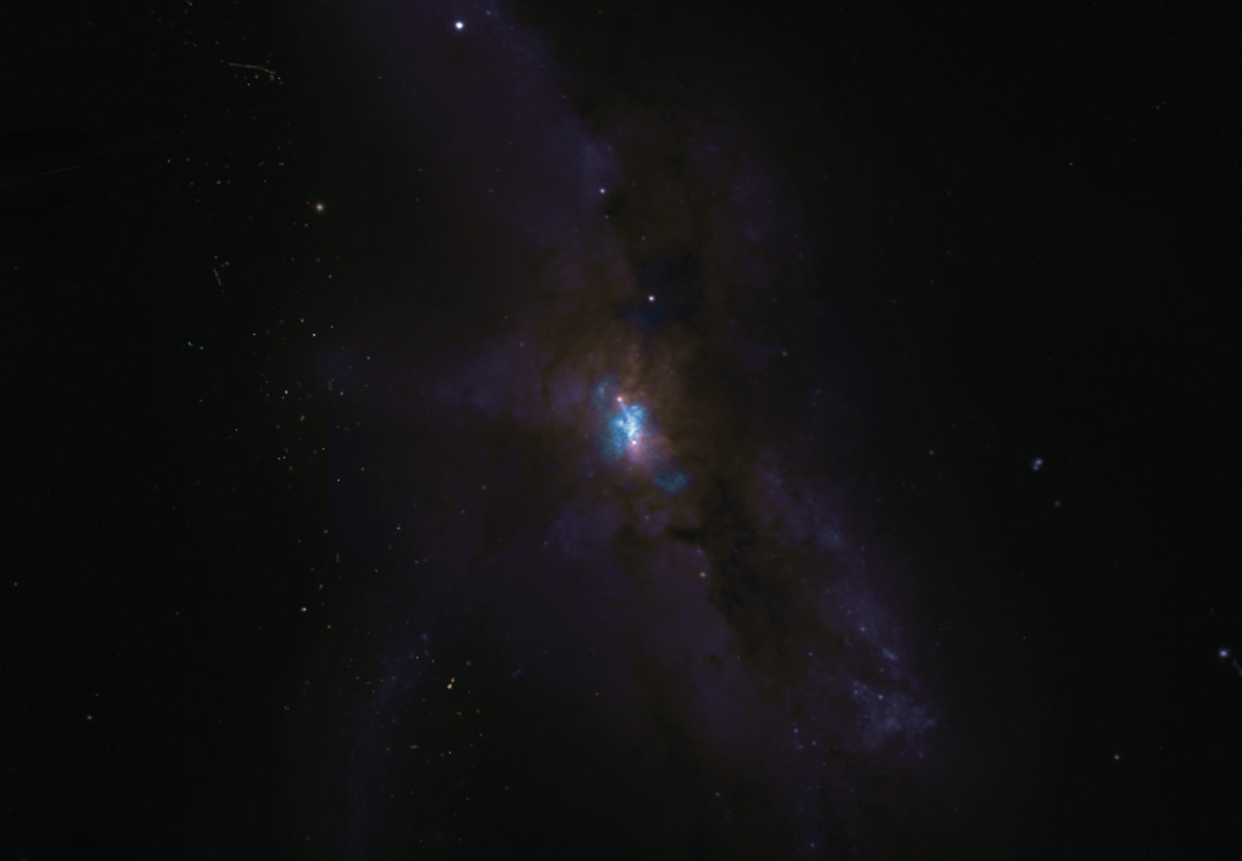Two huge black holes spotted smashing into each other as galaxies collide

Two vast black holes, each hundreds of millions of times the mass of our sun, have been spotted smashing into each other as two galaxies collide.
The cosmic collision was spotted in the constellation of Ophiuchus, where two galaxies are crashing into one another, with their central supermassive black holes likely to form one vast black hole.
New observations from the Atacama Large Millimeter/submillimeter Array (ALMA) telescope showed off the dust and gas surrounding the black hole in unprecedented detail.
It also offered new insight into the sheer size of the monstrous black hole.
READ MORE
Huge black hole in our galaxy ‘suddenly emits mysterious glow’
CES 2020: Alexa-enabled shower lets you listen AND wash
CES: What to expect from the technology bonanza
CES: Watch LG’s press conference here
The new ALMA observations have increased the resolution of the images by a factor of ten – showing for the first time the structure of the cold gas in the galaxy, even within the sphere of influence of the black holes.
“The key to understanding this galaxy system is molecular gas,” explained Ezequiel Treister of the Pontificia Universidad Católica in Santiago, Chile.
“This gas is the fuel that is needed to form stars, but it also feeds the supermassive black holes, which allows them to grow.”
Most of the gas is located in a region between the two black holes. Less detailed observations taken previously suggested that this gas might be a rotating disk.

“We don’t find any evidence for that,” said Treister. “Instead, we see a chaotic stream of gas with filaments and bubbles between the black holes. Some of this gas is ejected outwards with speeds up to 500 kilometers per second. We don’t know yet what causes these outflows.”
Another reason to observe the gas in such detail is that it helps to determine the mass of the black holes.
“Previous models, based on surrounding stars, indicated that the black holes were much more massive than we expected, around a billion times the mass of our Sun,” said Anne Medling of the University of Toledo in Ohio.
“But these new ALMA images for the first time showed us how much gas is caught up inside the black holes’ sphere of influence. This mass is significant, and therefore we now estimate the black hole masses to be lower: around a few hundred million times the mass of our Sun. Based on this, we think that most previous black hole measurements in systems like this could be off by 5-90 percent.”
The gas also turned out to be even closer to the black holes than the astronomers had expected. “It is located in a very extreme environment,” explained Medling. “We think that it will eventually fall into the black hole, or it will be ejected at high speeds.”

 Yahoo News
Yahoo News 
